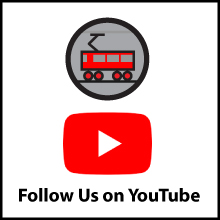Do Buses Have an Image Problem?
March 4, 2015
More often than not, transit agencies in the US will choose to develop rail service where public transit is needed, even though a bus service would be far more affordable while providing a similar level of service. The reason, according to a 2009 Federal Transit Administration report, is that bus service in the United States suffers from an image problem. Riding buses carries a “shame factor” that is not associated with trains. Unfortunately, this negative perception of buses can also extend to bus rapid transit. Successful bus rapid transit lines, with high frequency and dedicated lanes, like Los Angeles’ Orange line, aren’t even seen as buses by many riders–they are described as train-like or even bourgeois.
A poll of 1,370 people in 6 Australian cities shows that a majority of people will rank rail over bus rapid transit, despite being aware of both modes of transit. While this may suggest that people simply prefer rail to buses, a closer analysis shows that the quality of transit service is more important that type of transit. The data from Sydney, which recently improved its bus service, seems to support this, as it ranked buses highest out of all the cities. Other factors that made it more likely for a rider to rate buses positively include having a seat for the entire trip or even just riding the bus recently.
Another problem with buses may also be that transit agencies don’t run enough buses to comfortably satisfy the demand. In New York, the buses are so crowded that if they were to have better marketing, and attract those who currently take cabs, it is highly unlikely that every rider would have access. In this case, it seems that the bus’ negative image is at least in part derived from its inadequate service, and not simply because it needs better marketing.
Regardless, buses deserve a bit more credit in the US. This goes especially for bus rapid transit systems that have level boarding, dedicated lanes, reliable service, and off-board fare payment.







